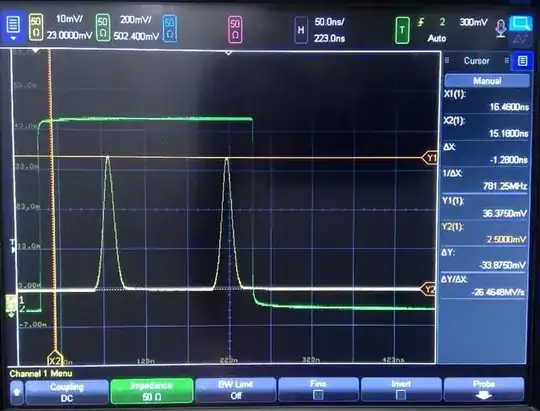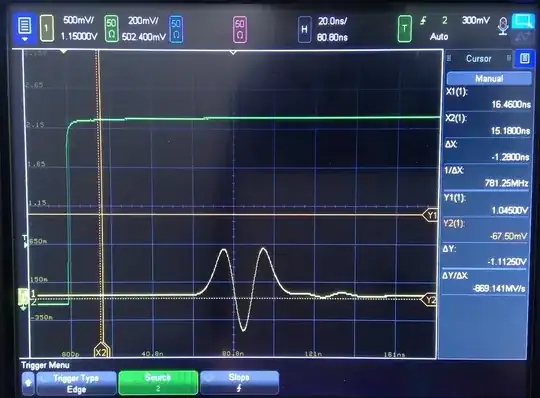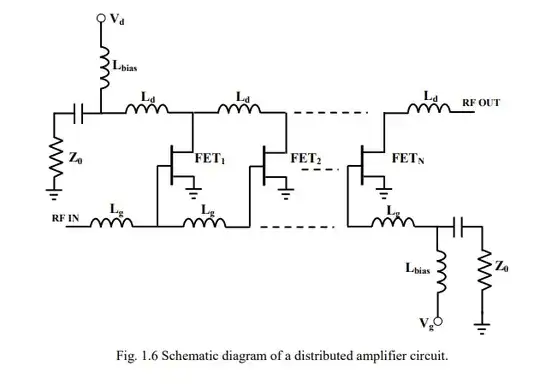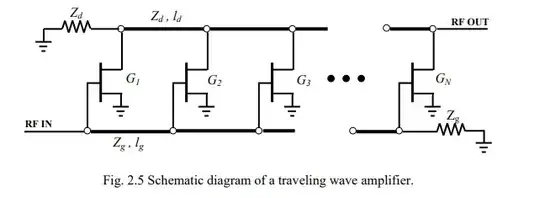I have an expensive arbitrary waveform generator (AWG) that can create very clean arbitrary pulses. I am producing gaussian pulses from this AWG that are about 10ns wide, which look like this on a scope:
The AWG has the drawback of only being able to output small voltages.
I would like to cleanly amplify this signal that has a peak of 33mV to 900mV.
Right now I am using this amplifier to amplify the signal. The output looks like:
As you can see, there is a considerable amount of ringing on the signal at the end of the pulse.
I think it's possible that I can fiddle with the amplifier settings to try to get some level of improvement. I am considering how reasonable it would be to get a new amplifier.
- Are there devices that can amplify this kind of signal without this ringing effect?
- How do I evaluate from the datasheet of my amplifier what it should be able to do theoretically?
The datasheet of the amplifier says the following:
Is this % overshoot/undershoot the parameter that I should be paying attention to for the amount of ringing? Is this saying that the ringing is a 5% overshoot from the target value of zero?
EDIT: User Kuba asked for some context to this use case, since in many applications the actual ringing effect is not so important to remove.
These 10ns pulses are sent into an electro-optical modulator to carve this shapes out of pulses of light, which are used in an experiment. In addition to carving 10ns gaussian pulses, I also carve other "hermite gauss modes." A gaussian is a Hermite-gauss mode of n = 0. On the scope, the Hermite Gaussian mode of 2 looks like:
The goal (and reason for choosing different hermite-modes) is to create a set of temporally-orthognal pulses, such that the area under the curve of the combined fields is zero. $$ \int E_1(t) E_2(t) dt = 0$$
Here you can see the effect of the ringing on a histogram of the optical light:
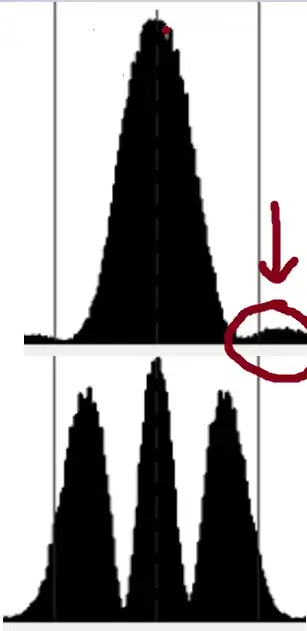
So you can see that with the different functions, there is a bit of unwanted overlap. I'm not sure if this is enough to explain my issue, but it is something that I think might be possible to remove.
